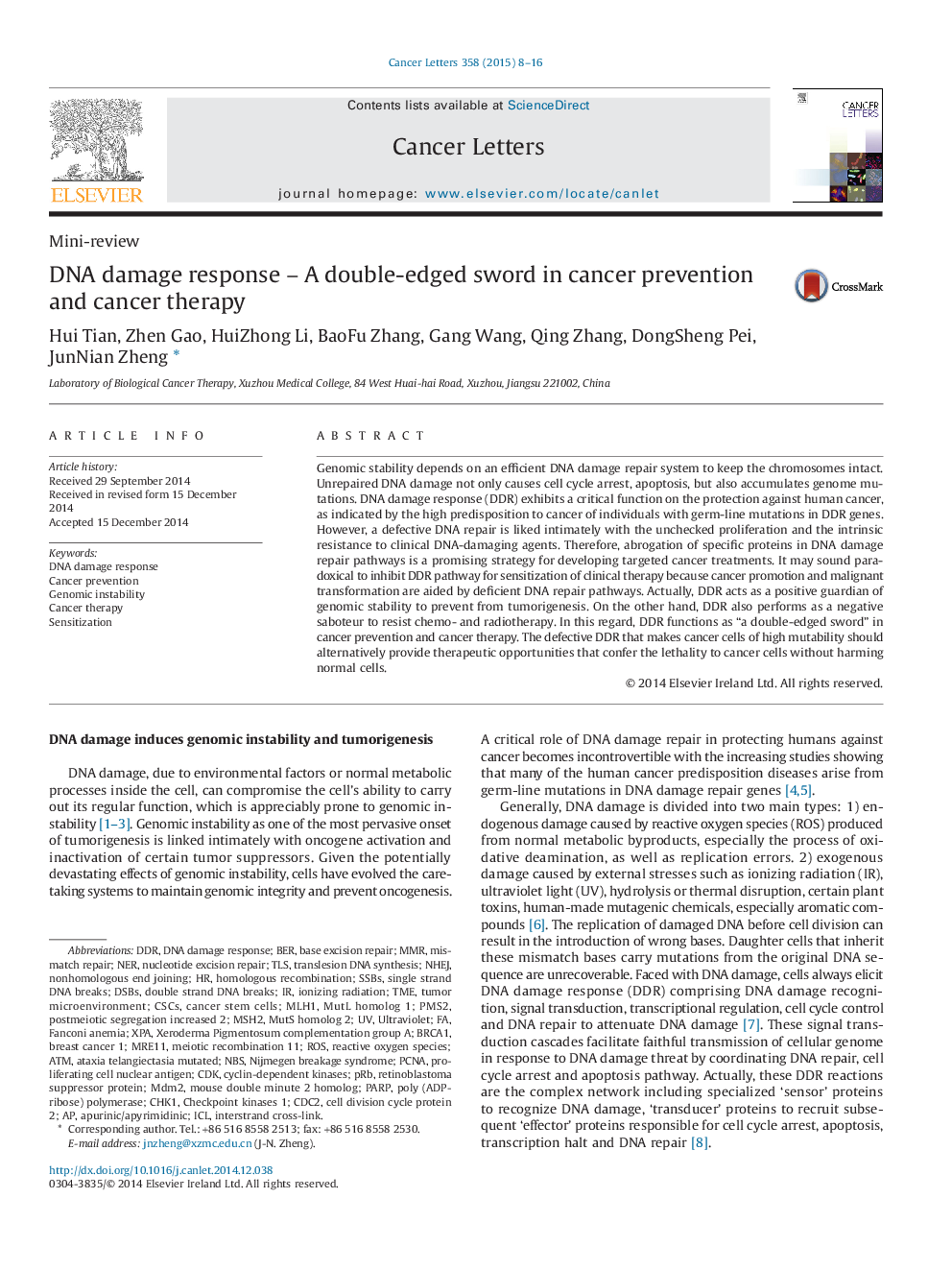| Article ID | Journal | Published Year | Pages | File Type |
|---|---|---|---|---|
| 2116148 | Cancer Letters | 2015 | 9 Pages |
•DNA damage induces genomic instability and tumorigenesis.•Tumor correspondingly regulates DNA damage repair through tumor microenvironment.•Inhibition of DNA damage repair sensitizes cancer therapy.
Genomic stability depends on an efficient DNA damage repair system to keep the chromosomes intact. Unrepaired DNA damage not only causes cell cycle arrest, apoptosis, but also accumulates genome mutations. DNA damage response (DDR) exhibits a critical function on the protection against human cancer, as indicated by the high predisposition to cancer of individuals with germ-line mutations in DDR genes. However, a defective DNA repair is liked intimately with the unchecked proliferation and the intrinsic resistance to clinical DNA-damaging agents. Therefore, abrogation of specific proteins in DNA damage repair pathways is a promising strategy for developing targeted cancer treatments. It may sound paradoxical to inhibit DDR pathway for sensitization of clinical therapy because cancer promotion and malignant transformation are aided by deficient DNA repair pathways. Actually, DDR acts as a positive guardian of genomic stability to prevent from tumorigenesis. On the other hand, DDR also performs as a negative saboteur to resist chemo- and radiotherapy. In this regard, DDR functions as “a double-edged sword” in cancer prevention and cancer therapy. The defective DDR that makes cancer cells of high mutability should alternatively provide therapeutic opportunities that confer the lethality to cancer cells without harming normal cells.
